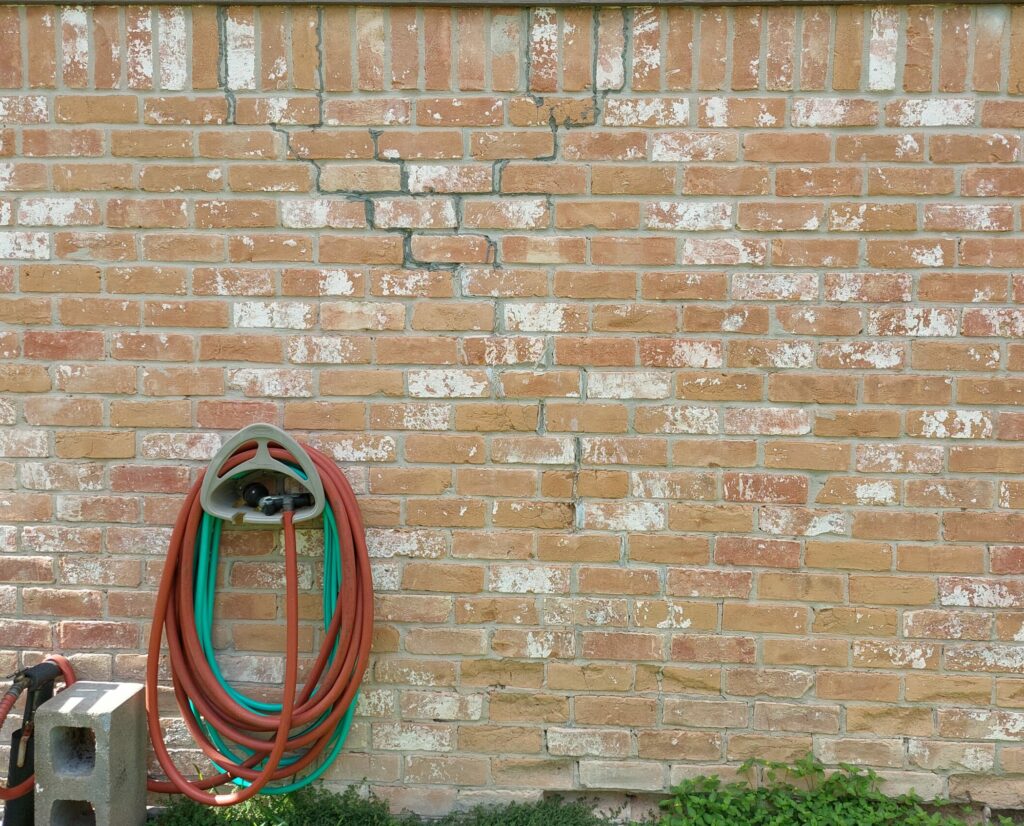Everything in the house is built upon the most important item – The Foundation. Foundation repairs can range from as little as $3,000 to exceed $50,000. The foundation is so important the Texas Real Estate Commission requires an opinion on its condition. Is the foundation performing as intended? Or does it need a further evaluation?
The expansive clay soil mixture in southeast Texas moves houses more than we might think. All houses move and settle. Foundations are built to move with the weather changes and have some degree of flexibility. There are three main factors that affect the long term performance of a foundation.
Water: The biggest problem is usually the presence of water in some areas and the lack of water in other areas directly next to the house foundation. The clay expands up to 300 times larger when it is wet. The dry areas do not, which causes stress on the foundation. Click here for a 7-minute video where a scientist explains this with colored beads: https://youtu.be/SW-NoiM726U
This is why inspectors are so concerned with drainage around houses. Areas that show evidence of ponded water, a negative grade toward the home, or areas where someone has dug a moat around the house and filled it in with rocks may lead to major foundation issues if they are not corrected.
Tree Roots: That large, beautiful tree may be the worst enemy of your foundation. Tree roots seek out moisture in the soil. Frequently there is moisture in the soil under the house. The general rule of thumb is that the roots grow as long as the branches. So, if you see branches extending over the roof, there’s a good chance roots have grown under the foundation.
Hurried Homes: It doesn’t happen very often, but some new home builders are in such a hurry to build your new home that they don’t pack the soil and let it sit long enough. The last home we saw like this was 13 months old at Lake Conroe. The back left corner of the house had dropped 3-1/2 inches below the rest of the foundation. Major cracks in the living room were covered by a large curtain!
When is foundation movement an issue? There are many reasons that floors may be unlevel. The slab may not be level on installation, thin set used for tile may not be a uniform thickness, and other issues are common to building houses. Measuring the floor is advisable when there is a question about the foundation. Foundation problems will also show as windows and doors that are binding or out-of-square, large cracks, and other signs. Since all houses move and settle, cracks do not necessarily indicate problems.
The system we developed is not just observing cracks or unlevel floors. We look at over 25 different indicators to determine if there is enough evidence for a more in-depth evaluation. This gives us a picture of the whole house and the way the foundation is performing. Issues are discussed amongst our 3 inspectors after every physical inspection and recommendations are made if needed.
When there is a concern, we always recommend an engineer, the highest level professional, because our clients deserve the best information about the home they are buying. There are too many foundation companies who sell repairs and never even check back to see if the work was done correctly. The civil engineer we recommend is honest and thorough.

